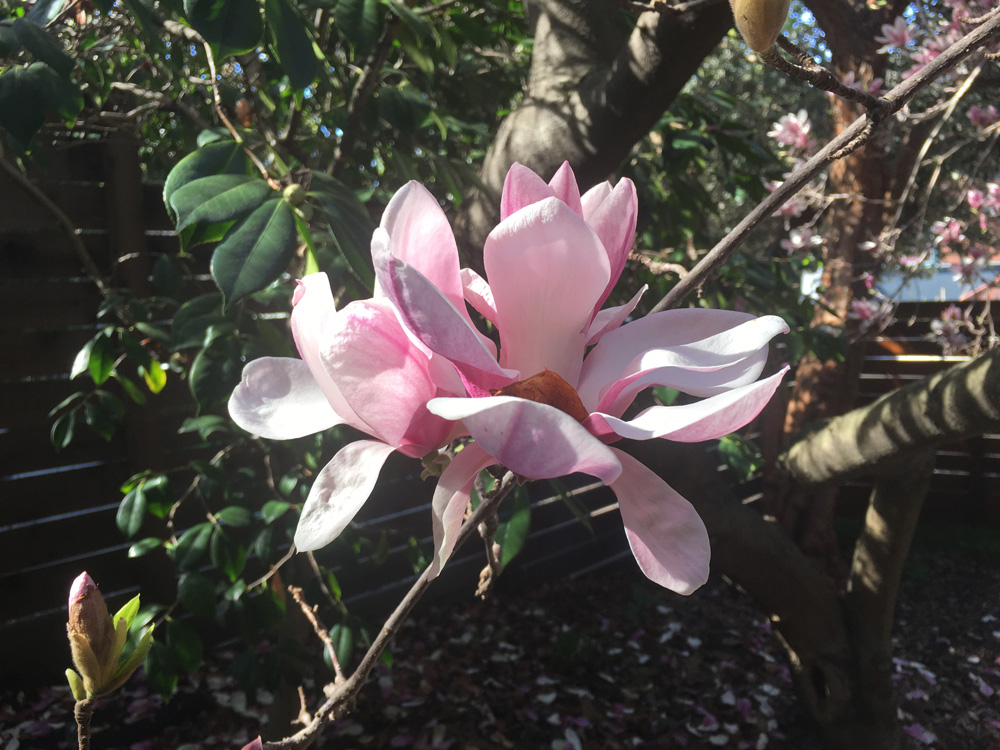FLORALFAUNA
Imaginary insects constructed from fallen magnolia petals imprinted with human shoe marks.
A splice between two magnolia tree species from Japan, saucer magnolia Magnolia × soulangeana, is a botanical hybrid created by the French botanist Etienne Soulange-Bodin in the 18th century. A popular ornamental tree, flower petals from of the saucer magnolia often fall on urban sidewalks, where the shoe prints of passing pedestrians leave geometric tread patterns on the soft tissue of the discarded petals.
As an ornamental landscaping plant that is the hybrid product of the human botanical imagination, the fallen petals of the saucer magnolia bear witness to the role human agency plays in the tree's propagation and distribution. Originally evolved to attract pollinating insects, remnants of the blossoms now function as a kind of accidental floral memory that records the flow of human foot traffic adjacent to the parent tree. Browning and becoming less sensitive with age, the petals preserve impressions from different time periods, graphing both the density of human footfall, and the contrast between recent and earlier footmarks.
Saucer magnolia is host to a wide variety of insects. Bees, beetles, and flies visit the blossoms. Predatory scale, aphids, and moth larva feed on the leaves, and the leaf litter below provides habitat for crane flies, Jerusalem crickets, earwigs, and springtails.
Magnolias are thought to be one of the oldest flowering plants in the world, appearing in the fossil record millions of years before the more advanced insect pollinators like bees, butterflies, and moths, Pollination is accomplished primarily by beetles, who feed on the protein rich pollen of the botanically primitive flowers. Descendent of an ancient tree lineage, saucer magnolia and it's accompanying constellation of insects now occupies a niche in a complex network of urban and suburban subnatures, dependent more human aesthetic appeal than pollination for it's continuity and distribution.
Born from the virtual entomology of the internet merged with fallen tree blossoms, the composite creatures of the Floralfauna project reflect the blurred boundaries between human, tree, and insect that characterize the engineered horticultures and hybrid landscapes of our contemporary ecological condition.











